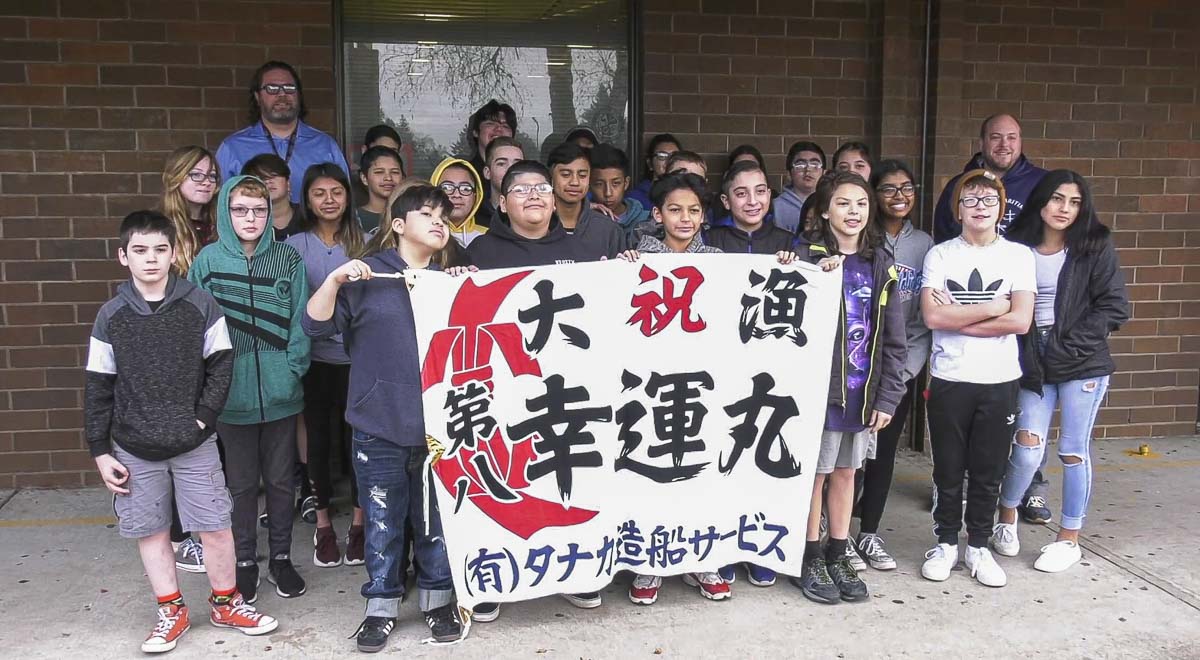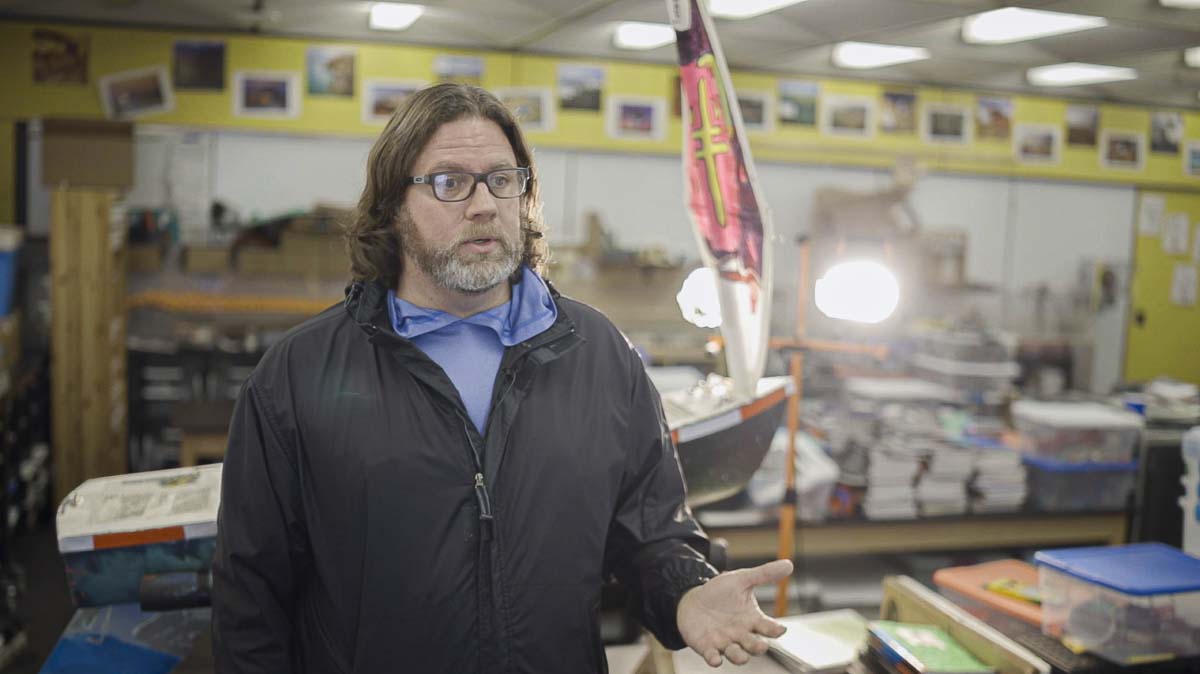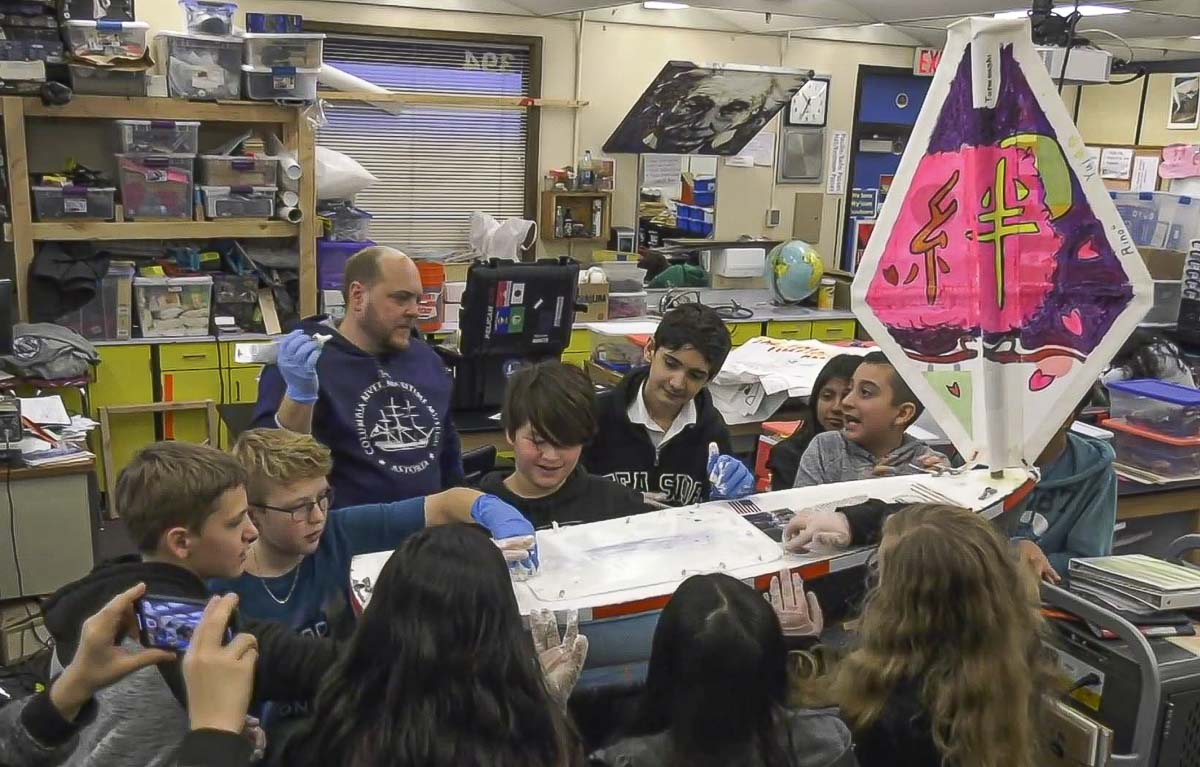On Jan. 21 students from Wy’east Middle School launch at Astoria Maritime Museum
VANCOUVER — Nearly 5,000 miles across the open ocean. Alone.
That is the path of the dozens of mini-boats launched by students in Japan and America. This year, Vancouver middle schoolers will be embarking on a voyage of their own.

“I’m looking forward for it to not crash, hopefully,” said Wy’east student London Lockwood smiling. “I want to see more of Japan’s culture and how they react to it, and hopefully it goes there.”
For the past several weeks and months, the mini-boats program has been introduced and implemented at Wy’east Middle School in Vancouver. Through a partnership with the Columbia River Maritime Museum, schools across the region, now including Wy’east, will launch their vessels on Jan. 21 in Astoria, OR with the help of the Columbia River Bar Pilots and the U.S. Coast Guard.
Lockwood worked as the Quartermaster for the project, in which he managed the plotting of the expected route and the wave mapping of the regions of the Pacific Ocean the boat would likely traverse.

“When we as educators are working with students to make the content something that’s comprehensible, we have to do things like this,” said Joe Boken, the Wy’east science teacher heading the project. “Not just to realize that you’re part of something larger, but to be able to engage with the material and enjoy the experience and be able to go into a workplace later in life and say, ‘Oh, gosh, this is kind of like when I was in seventh grade, and I worked as a team on building this mini boat.’”
The program is funded by the museum and its sponsors, and the boats are prefabricated for students to assemble and paint. As a team, the class at Wy’east learned about how to properly put together their vessel and document the process.
Wy’east’s unmanned mini-sailboat will launch with two other Oregon school’s boats at 10:30 a.m. with a public event at the museum which sits along the mouth of the Columbia River. There is no cost for the public to attend, and the schools invite everyone to come.
Weather permitting, the Wy’east mini-boat will then be carried out to sea by the Columbia River Bar Pilots’ boat and launched just off the coast around 1 p.m. From there, its solar powered GPS will send a signal and data to the National Oceanic and Atmospheric Administration (NOAA), as well as the students through the museum.
“Mini-boats may be small, but they are mighty! They have the power to create substantial and lasting impact in the community and well beyond,” said Nate Sandel, the education director at the Maritime Museum, in a release. “We’ve seen these boats capture the imagination of our students, but also many people from around the world, who encounter the boats, help with a rescue, or simply follow the boats’ progress online. It’s an exciting adventure we’re so happy to share during this year’s Miniboat Summit.”

The program was birthed after pieces of a Japanese shrine and an intact fishing boat washed up on the Oregon and Washington coasts following the 2011 tsunami that bludgeoned part of Japan’s east coast and critically damaged the Fukushima Daiichi nuclear power plant.
The shrine pieces have since been returned to Japan and the fishing boat now sits in the Maritime Museum as a display about the tsunami. The mini-boat program seeks to teach students about the disaster, as well as how they can become more connected with their peers in Japan.
“It was fun to be kind of hands on, as Quartermaster being so important in the fate of the boat,” Lockwood said. “I’d say it’s a pretty unique experience.”
For more information and to see the GPS trajectory of the mini boats, visit www.crmm.org. Stay tuned for our micro-documentary of the boat launch next week.





joe boken traumatized hundreds of students with his aggressive nature i am glad these students were proud enough of this project to be able to hold a smile for a picture in his presence